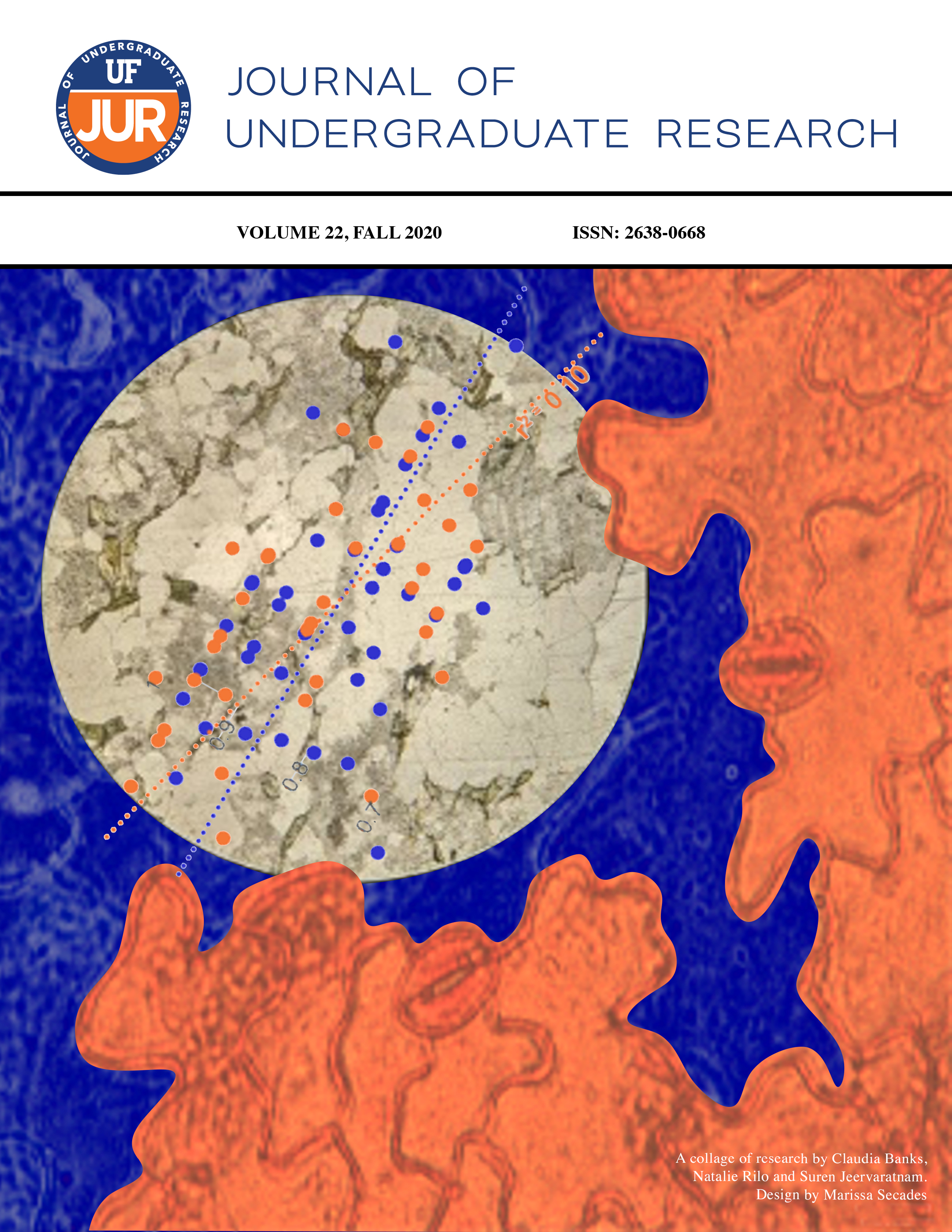Drying of Algae: Analysis of Oedogonium Dehydration Kinetics
DOI:
https://doi.org/10.32473/ufjur.v22i0.121818Keywords:
Oedogonium, microalgae, drying, cell fracturing, algal cultivationAbstract
Algae cultivation has multiple potential applications including biofuel production, wastewater treatment, and carbon capture. However, dewatering and dehydration remain a challenge for commercialization. Research has focused mainly on microalgae, but filamentous algae have recently gained attention due to their larger size and thus relative ease of harvesting. The drying mechanics of filamentous algae has yet to be fully understood and optimized. This study investigated the drying behavior of the filamentous algae Oedogonium at 50℃, 60℃ and 70℃. The moisture content of triplicate samples of microalgae and Oedogonium (intact filaments, fractured filaments, and aggregated forms) was measured during drying. Intact Oedogonium filaments were fractured using a food blender. Intact Oedogonium had an average shorter falling rate phase and higher diffusivity then microalgae at all temperatures, resulting in a 15%, 8.3%, and 11% faster total average drying time at 50℃, 60℃ and 70℃ respectively. Fractured Oedogonium further had a shorter falling rate phase than intact Oedogonium at 50℃ and 60℃ where its average total drying time was respectively 18% and 9% faster, but the effect of the fracturing treatment reduced with increasing temperature and became negligible at 70℃. Thus, Oedogonium appears to dry more effectively than microalgae, and fracturing Oedogonium results in faster dehydration at lower temperatures. These findings could help optimize industrial drying and assist in the commercialization of algae cultivation.
Metrics
Downloads
Published
Issue
Section
License
Some journals stipulate that submitted articles cannot be under consideration for publication or published in another journal. The student-author and mentor have the option of determining which journal the paper will be submitted to first. UF JUR accepts papers that have been published in other journals or might be published in the future. It is the responsibility of the student-author and mentor to determine whether another journal will accept a paper that has been published in UF JUR.

